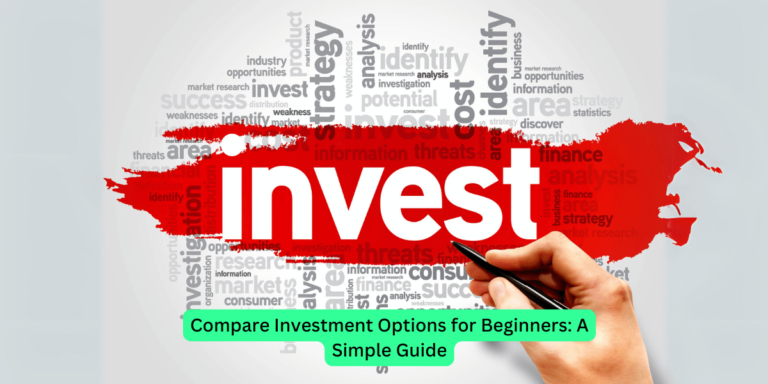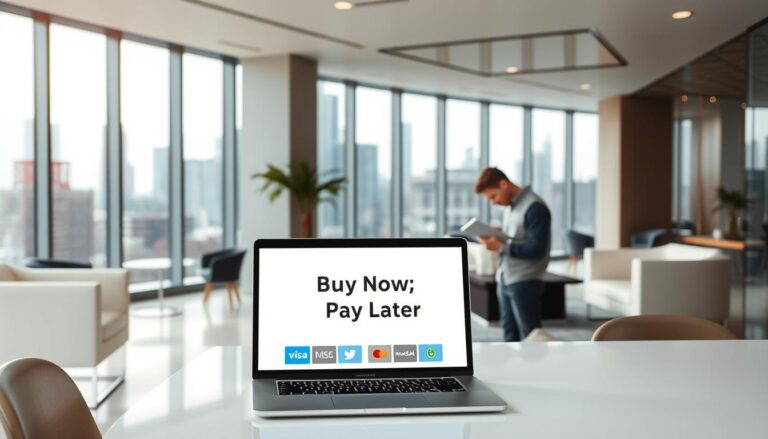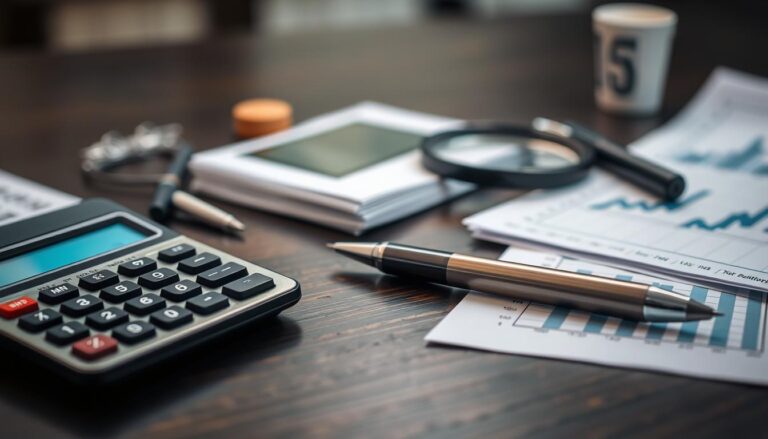Best Personal Finance Apps for Budgeting: Top Picks for 2025
Managing money can be tough. Budgeting apps make it easier. Personal finance apps are helpful tools. They track spending, set goals, and save money. With so many options, finding the right app can be a challenge. Each app has unique features. Some link to bank accounts, while others focus on tracking expenses.
Choosing the best one depends on your needs. This list will guide you to the best budgeting apps. Discover which app fits your lifestyle. Your financial health will thank you. Ready to take control of your money? Let’s explore the best personal finance apps for budgeting.
Top Budgeting Apps
Managing finances can be a daunting task, but the right tools can make a world of difference. Personal finance apps have become essential for anyone looking to budget effectively. Below, we explore some of the top budgeting apps that can help you take control of your finances and achieve your financial goals.
Features To Consider
Choosing the right budgeting app involves looking at several key features. These features ensure that the app meets your needs and helps you stay on track with your financial goals. Here are some features to consider:
- Expense Tracking: The app should allow you to track all your expenses easily. Look for features that enable you to categorize your spending.
- Income Management: A good app helps you manage multiple sources of income. This is crucial for accurate budgeting.
- Bill Reminders: Timely bill reminders help you avoid late fees. Ensure the app can notify you when bills are due.
- Customizable Categories: The ability to create and customize categories helps you track your spending in more detail.
- Reports and Analytics: Look for apps that offer detailed reports and analytics. These tools help you understand your spending habits.
- Security Features: Ensure the app has robust security features. This is vital for protecting your financial data.
Here’s a table summarizing these features:
| Feature | Description |
|---|---|
| Expense Tracking | Track and categorize spending |
| Income Management | Manage multiple income sources |
| Bill Reminders | Receive notifications for due bills |
| Customizable Categories | Create and customize spending categories |
| Reports and Analytics | Generate detailed financial reports |
| Security Features | Protect financial data |
User Experience
User experience is a critical factor when choosing a budgeting app. An app that is difficult to use can be more of a hindrance than a help. Here are some aspects of user experience to consider:
- Ease of Use: The app should be user-friendly. A simple and intuitive interface makes it easier to navigate and use.
- Setup Process: The initial setup should be straightforward. Complicated setup processes can be discouraging.
- Customer Support: Good customer support is essential. Look for apps that offer help through various channels like chat, email, or phone.
- Integration: The app should integrate well with your bank accounts and other financial tools. This ensures seamless tracking of your finances.
- Mobile Compatibility: Check if the app is compatible with your mobile device. Mobile compatibility ensures you can manage your finances on the go.
Below is a table summarizing these aspects:
| Aspect | Description |
|---|---|
| Ease of Use | Simple and intuitive interface |
| Setup Process | Straightforward initial setup |
| Customer Support | Availability of support channels |
| Integration | Seamless integration with financial tools |
| Mobile Compatibility | Compatibility with mobile devices |
Considering these user experience aspects helps ensure you choose a budgeting app that you will find easy and pleasant to use.
Free Vs. Paid Options
Managing your finances effectively can be a challenge, but the right personal finance app can make budgeting easier. One key decision is choosing between free and paid options. Both types have their pros and cons, and understanding them can help you decide which is best for your needs.
Cost-benefit Analysis
When evaluating free versus paid personal finance apps, it’s important to consider the benefits each offers relative to their cost.
Free apps are attractive because they don’t require any financial investment. They often come with basic features that are sufficient for many users. These might include:
- Expense tracking
- Budget setting
- Basic financial reports
However, free apps may have limitations. For instance, they might:
- Display ads
- Limit the number of accounts you can link
- Offer fewer advanced features
Paid apps, on the other hand, typically offer a more robust set of features. These might include:
- Advanced budgeting tools
- Investment tracking
- Custom financial reports
- Ad-free experience
The cost of paid apps can vary widely. Some charge a one-time fee, while others require a monthly or annual subscription. Here is a quick comparison:
| Feature | Free Apps | Paid Apps |
|---|---|---|
| Expense Tracking | Basic | Advanced |
| Ads | Yes | No |
| Account Linking | Limited | Unlimited |
| Custom Reports | Basic | Advanced |
Choosing between free and paid apps depends on your needs. If you need basic features, a free app might be sufficient. For more advanced tools, a paid app could be worth the investment.
Best Free Apps
Several free personal finance apps can help you manage your budget effectively. Here are some of the best:
Mint is one of the most popular free budgeting apps. It offers features like:
- Expense tracking
- Budget setting
- Credit score monitoring
Mint provides a comprehensive overview of your financial health, making it a great choice for beginners.
YNAB is another excellent free app, though it also offers a paid version. Key features include:
- Real-time expense tracking
- Goal setting
- Financial education resources
YNAB focuses on proactive budgeting, helping you plan for future expenses.
Goodbudget uses the envelope budgeting method. This app allows you to:
- Allocate funds to specific categories
- Track expenses
- Sync data across devices
Goodbudget is ideal for those who prefer a hands-on approach to budgeting.
Each of these free apps offers unique features that can help you stay on top of your finances. Whether you need basic expense tracking or more advanced tools, there’s a free app to meet your needs.
Integration With Bank Accounts
Managing money can be challenging, but personal finance apps make it easier. One key feature is the integration with bank accounts. This helps you keep track of your spending and budgeting in real-time. By connecting your app to your bank, you can see all transactions and balances in one place. This integration provides a clearer picture of your financial health.
Data Security
Security is a top concern when linking your bank account to an app. Personal finance apps use strong security measures to protect your data. Here are a few key features:
- Encryption: Apps use encryption to keep your data safe. This means your information is turned into a code that only the app can read.
- Two-Factor Authentication: Many apps require you to verify your identity in two ways. This makes it harder for someone to access your account.
- Secure Servers: Your data is stored on secure servers. These servers have extra protections to prevent hacking.
These features ensure that your personal and financial information remains private. To give you peace of mind, most apps follow industry standards for data protection. They comply with regulations and undergo regular security audits.
Here is a table summarizing key security features:
| Security Feature | Description |
|---|---|
| Encryption | Converts data into a secure code |
| Two-Factor Authentication | Requires two forms of identity verification |
| Secure Servers | Stores data on protected servers |
Transaction Syncing
Syncing transactions is another important feature of personal finance apps. It allows you to see all your bank transactions in the app. This helps you stay on top of your spending and budget more effectively.
Transaction syncing offers several benefits:
- Real-Time Updates: Transactions appear in the app as soon as they happen. This keeps your budget up to date.
- Automatic Categorization: The app sorts your transactions into categories like groceries, rent, and entertainment. This helps you see where your money goes.
- Expense Tracking: You can track your spending over time. This helps you identify spending patterns and areas to cut back.
Many apps allow you to set up alerts for transactions. For example, you can get a notification when you spend a certain amount. This helps you stay within your budget and avoid overspending.
In summary, integrating your bank account with a personal finance app provides a comprehensive view of your finances. It keeps your data secure and makes budgeting easier through real-time transaction syncing.
Unique Features To Look For
Managing personal finances can be a daunting task, but the right budgeting app can make it much easier. Finding an app that fits your needs is crucial. Here are some unique features to look for in the best personal finance apps for budgeting.
Goal Setting
One key feature to look for is goal setting. This feature helps you set financial goals and track your progress. Whether you want to save for a vacation, pay off debt, or build an emergency fund, goal setting can keep you motivated.
Look for apps that allow you to:
- Define specific goals
- Set deadlines
- Track progress
Some apps even offer visual progress trackers. These can be graphs or charts that show how close you are to reaching your goals. Visual aids can make it easier to stay on track.
Also, consider apps that send reminders and alerts. These notifications can prompt you to make deposits into your savings or notify you if you’re falling behind.
Here’s a quick comparison of goal-setting features in popular budgeting apps:
| App | Goal Setting | Progress Tracking | Alerts |
|---|---|---|---|
| Mint | Yes | Yes | Yes |
| YNAB (You Need a Budget) | Yes | Yes | Yes |
| EveryDollar | Yes | No | No |
Spending Insights
Another important feature is spending insights. Understanding where your money goes is crucial for effective budgeting.
Look for apps that offer:
- Detailed spending reports
- Category breakdowns
- Spending trends
These insights can help you identify areas where you can cut back. For instance, you may not realize how much you spend on dining out until you see a report.
Some apps provide monthly summaries. These summaries can show your total spending, savings, and progress towards your goals. It’s like getting a financial report card each month.
Consider apps that allow you to customize spending categories. This way, you can track spending in areas that matter most to you.
Here’s a look at spending insight features in popular budgeting apps:
| App | Spending Reports | Category Breakdown | Trends |
|---|---|---|---|
| Mint | Yes | Yes | Yes |
| YNAB (You Need a Budget) | Yes | Yes | Yes |
| EveryDollar | Yes | Yes | No |
By using an app with robust spending insights, you’ll have a clearer picture of your financial health. This knowledge can help you make smarter spending decisions and achieve your financial goals.
User Reviews And Ratings
Managing your finances can be tricky. Personal finance apps help. These apps keep you on track with budgeting. But how do you pick the best one? User reviews and ratings can help. They show real experiences. They highlight the strengths and weaknesses. Let’s dive into user feedback on the best personal finance apps for budgeting.
Top Rated Apps
Some apps shine in user reviews. They get high ratings for their features and ease of use. Here are the top-rated personal finance apps:
- YNAB (You Need A Budget): Users love its budgeting system. It helps you plan every dollar. The app has a 4.8-star rating on the App Store. Users say it has changed their financial habits.
- Mint: This app is popular for its all-in-one features. It tracks your spending and helps you set budgets. It has a 4.7-star rating on Google Play. Users appreciate its simple interface and detailed expense tracking.
- Personal Capital: Users rate this app highly for investment tracking. It has a 4.6-star rating on the App Store. The app combines budgeting with investment tools. Users find it very helpful for long-term planning.
Here’s a quick comparison of the top-rated apps:
| App Name | Rating | Key Feature |
|---|---|---|
| YNAB | 4.8 | Budgeting system |
| Mint | 4.7 | All-in-one tracking |
| Personal Capital | 4.6 | Investment tracking |
Common Complaints
Even the best apps have their downsides. Users often point out similar issues. Here are the common complaints about these apps:
- YNAB: Some users find it expensive. It has a subscription fee. Others say it takes time to learn. The budgeting system is different from other apps.
- Mint: Users report syncing issues. Sometimes bank accounts do not update. Others mention ads. The app shows ads for financial products. This can be annoying.
- Personal Capital: Some users find it too complex. It has many features. This can be overwhelming. Others mention privacy concerns. The app asks for a lot of personal data.
Here’s a summary of the common complaints:
| App Name | Common Complaint |
|---|---|
| YNAB | Cost and learning curve |
| Mint | Syncing issues and ads |
| Personal Capital | Complexity and privacy concerns |
Frequently Asked Questions
What Is The Best Budget App For Personal Finance?
The best budget app for personal finance is Mint. It offers expense tracking, budgeting tools, and financial insights. It’s user-friendly and free.
What Budget App Is Better Than Mint?
YNAB (You Need A Budget) is often considered better than Mint. It offers proactive budgeting tools and a user-friendly interface.
What Is The Best Way To Keep Track Of Personal Finances?
Use budgeting apps like Mint or YNAB. Track expenses and income regularly. Set financial goals and review monthly.
What App Does Dave Ramsey Recommend For Budgeting?
Dave Ramsey recommends the EveryDollar app for budgeting. It’s user-friendly and helps you manage your finances effectively.
What Are The Best Free Budgeting Apps?
Many top apps are free. Examples include Mint, PocketGuard, and Goodbudget.
Conclusion
Personal finance apps simplify budgeting. They offer tools to track expenses. You can set financial goals easily. Stay updated with your spending habits. These apps help organize your finances efficiently. Choosing the right app boosts your savings. Make informed decisions.
Experience less stress about money management. Find one that suits your needs. Explore the features each app provides. Start managing your money today. Budgeting becomes straightforward with the right app. Stay on top of your finances effortlessly. Try different apps to see what works best.
Make budgeting part of your daily routine. Keep your financial future bright and secure.







